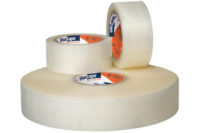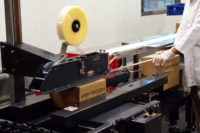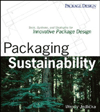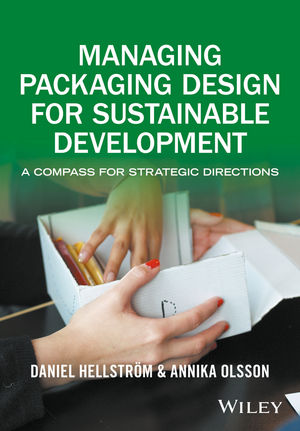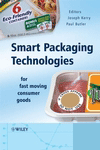Materials
Improved Packaging Efficiency: Tape Solutions for Recycled Substrates and Cold Environments
Special situations require specialized solutions for top performance.

Packaging tape is key to maintaining the integrity of cartons as well as the products inside. Making the wrong choice of tape or application system can result in failed seals and other issues that cause costly inefficiencies like rework and line stoppage. Selecting the right tape from the beginning of the process keeps cartons sealed, goods secure and lines running smoothly.
Certain packaging situations, however, require specialized solutions designed to meet the specific challenges of the application or operation. Two prime examples are the use of recycled corrugated boxes and cold packaging environments.
Recycled Packaging Is Rough on Tape
More than 90% of all products shipped in the U.S. are sent out in corrugated boxes, totaling over 400 billion square feet of cardboard annually. According to a report by Smithers, the global demand for corrugated packaging has grown by almost 4% annually since 2018 and is expected to reach $300 billion by 2023.
An increased focus on improving sustainability is the driving force behind the use of recycled corrugated cardboard. As companies continue to be more environmentally conscience, the shipping industry has shifted to process and deliver an ever-increasing volume of corrugated packages. In addition, the global COVID-19 pandemic has driven consumers to the internet for everyday purchases resulting in an uptick in e-commerce. This means there is a greater need to ship heavier, bulkier and more valuable packages — including food, beverages, industrial products and electronics. So while the industry has been moving toward this transition for years, the higher demand due to the pandemic has amplified the need for recycled corrugated cardboard.
These boxes can be made of 100% virgin fibers, 100% recycled fibers or any combination of the two. The move to eco-friendly packaging has led to a steady incline in both the percentage of boxes made from recycled cardboard and the percentage of recycled fiber in the cardboard itself, with many packaging operations now using 100% recycled content corrugated cartons.
This change in the construction of cartons has required adaptations in the adhesives used to seal them. Achieving a strong seal on virgin corrugated cartons is much easier. The fibers are longer and the surface more porous, allowing for a deep, quick-forming bond with the packaging tape’s adhesive. The recycling process changes the character of the substrate significantly. This is because the paper is chopped up and repulped, resulting in shorter fibers packed more tightly together. Since a single corrugated box fiber can be recycled six times before it must be discarded, multiple trips through this process leads to cartons with some incredibly short fibers. The resulting surface is less porous than virgin material, which makes it difficult for the tape’s adhesive to penetrate and bond with it quickly.
Fortunately, hot melt packaging tape manufacturers have developed adhesive formulations specifically for sealing highly recycled corrugated cartons — particularly 100% recycled cartons — to keep pace with the trends in sustainable packaging, as well as increases in shipping demands. These specially formulated hot melt packaging tapes offer robust, secure box sealing tape solutions, reducing the chances of compromised packages and, thus, reducing open returns for manufacturers and distributors.
These aggressive hot melt tapes offer higher shear, tack and holding power than standard hot melt packaging tapes and are purpose-built for producers shipping packages that must stand up to the rigors of the shipping process. They are designed specifically for scenarios where manufacturers need fail-safe tapes that unquestionably withstand rigorous supply chains.
When combined with an application system that delivers the appropriate amount of wipe-down force, the added pressure ensures that more of the tape’s adhesive is entangled deep within the fibers of the carton for strong, consistent and secure seals.
Cold Environments Can Freeze the Wrong Adhesive
Not only are industries faced with the rough surface of recycled packaging, but some must also deal with the challenges of a cold packaging environment. Whether frozen foods, meat and poultry processing or dairy facilities — which must remain chilled for health and safety — or unheated warehouses and storage facilities in cold climates, temperatures under 35 degrees Fahrenheit can make it hard for packaging tape to maintain its hold.
Tape has difficulties sticking properly in cold environments due to its viscoelasticity — the combination of both liquid and solid properties. When the liquid component of the tape hardens, it loses its tackiness. If the tape can’t make contact with the surface, it can’t adhere to the packaging. In order to avoid tape failure, cartons that are going to be stored in cold environments need the adhesive to form a permanent bond to the packaging without freezing.
Acrylic tape has a wide temperature range, but it is not recommended for automated applications. Acrylic tapes do not have a release coating, which causes them to require more pull force during unwind. During automated application this induces more stress to the tape’s film backing, causing premature breakouts, downtime and tape waste.
In addition, acrylic tape does not have the shear strength or holding power for applications utilizing automated palletization. For automated packaging lines in cold environments, the best choice is a machine-grade hot melt tape specially formulated with proper unwind properties and a synthetic rubber/resin adhesive that generates an instant, permanent bond in subfreezing temperatures.
Really tough applications require a really tough tape. A good, quality tape will ensure that materials are packaged securely, even in challenging carton and temperature conditions.
Looking for a reprint of this article?
From high-res PDFs to custom plaques, order your copy today!





_web.jpg?height=200&t=1640190164&width=200)
